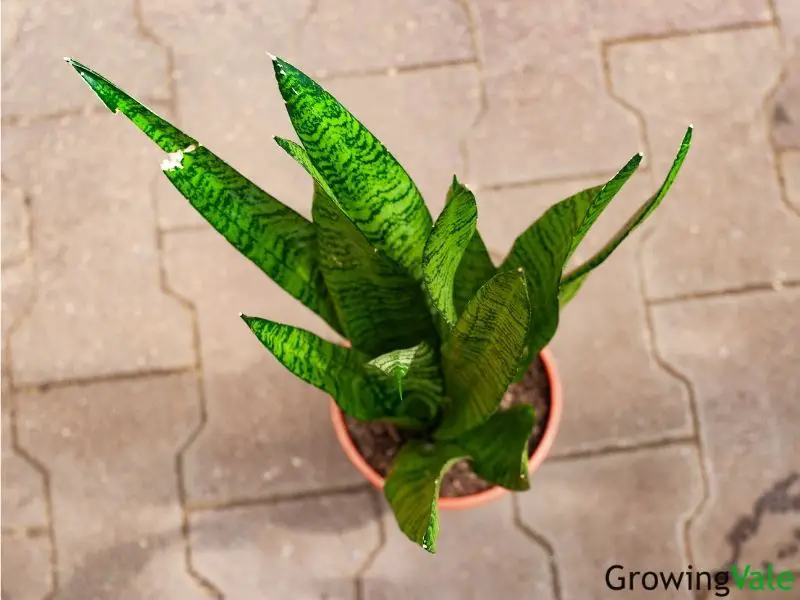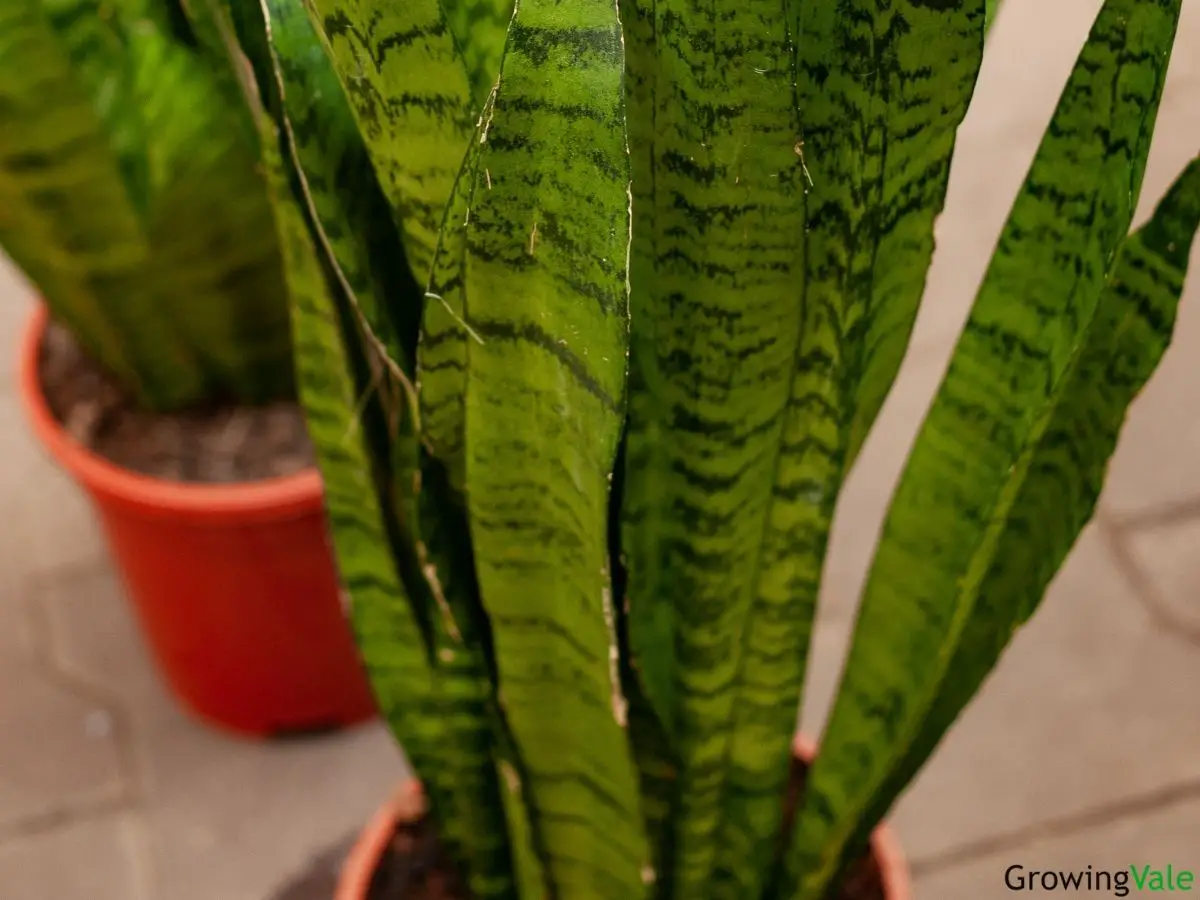Experienced house plant growers jokingly say that Dracaena trifasciata needs very little attention and should be given as a present to novice gardeners. It is a good idea to take a few leaf cuttings every so often to ensure that your snake plant can be propagated if its parts become damaged by overwatering or disease.
By increasing your stock using the propagation methods below, you will have a ready supply of presents too. You can choose or hand decorate a pot to suit the recipient. This would be a lovely personalized gift.

#1. Division of the root base
Do this carefully, and make sure you water your plant properly two days prior. You can divide the roots every 2-3 years or whenever the plant has overgrown its pot and is root bound. Ensure each part has leaves and a healthy set of roots.
Clumps tend to pull apart easily, but do wear gloves to avoid damage as Snake plant leaves can be very, very sharp. This method is suitable for all varieties, especially “Laurentii” as the leaves that may not easily root as cuttings. This variety is distinguished by its lemon-yellow leaf edges.
#2. Leaf cuttings in water
Cut some leaf pieces, making sure that each cutting is about 3 inches long. Ensure that you choose healthy leaves and cut them with pruning clippers or a sterilized pair of sharp scissors.
Use gloves to prevent getting nicks and cuts from the leaves’ sharp edges. Then, cut each leaf in half and place these cuttings in a jar of water. Watch them grow and use them to educate your younger gardeners!
Place the leaf cuttings in a brightly lit place, like a window sill. This way, you’ll easily see the roots developing – a real treat for children to watch!
#3. Leaf cuttings in soil
Snake plant propagation by leaf cuttings in soil works the same way. It is best if you first cut them from the main plant, split the leaves, and place cuttings directly in the soil. Ensure that your soil is sandy and suitable for succulents.
Water them to start and wait for a few weeks before checking for roots. Do so by carefully displacing a small amount of soil or by trying to move the cutting slightly. If it readily becomes displaced, the plant may need more time to become established. A sure sign of root development is the production of new leaves.
#4. Rhizome propagation
This sansevieria propagation method needs some careful digging, although rhizomes may also grow above ground (particularly if the plant has begun to outgrow its pot). Snake plant pups or snake plant babies are the rhizome with a vertical set of leaves that is connected from the main mother plant. This is the specialized, horizontally growing stem of your snake plants.
It would be wise to search for rhizomes when dividing your plant, so as to avoid too much disturbance to the rest of the root system.
A more unusual way is to identify the rhizome from the underground root and plant it separately. You can experiment with propagating different parts to see which generates new tissues the fastest.
#5. Seeds
Snake plant seeds are not usually used because it is seldom possible to predict which cultivar will develop. They may have variations that are not identical to those of the mother plant. Many gardeners prefer to use cuttings and divisions because the results are predictable.
Frequently-Asked Questions
How long does it take for a leaf cutting to root?
It will take 6 to 8 weeks for roots to develop in soil. You will probably notice water-propagated leaf cuttings begin to show white roots in as early as 3 weeks. Allow these to develop more root tissue before potting them in soil. You can continue to grow them in water too. Dracaena trifasciata is a very versatile plant and can be cultivated in both soil and water.
Can I grow Mother-in-law’s Tongue in just water?
Yes! In fact, some gardeners prefer to use a water-propagation setup as a table ornament because this plant is so tolerant of low light conditions. The water-propagated plant can be really attractive. The appearance of succulent leaves and gravity-defying roots in clear water can truly suit the modern home.
Do snake plants have babies?
Like many other succulents, you will often notice tiny plantlets growing at the base of the Mother-in-law’s Tongue plant, particularly the Bird’s Nest “Sansevieria Hahnii” variety. These can be removed and planted in soil to make new plants.

